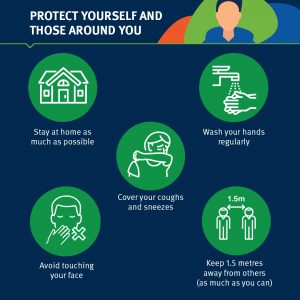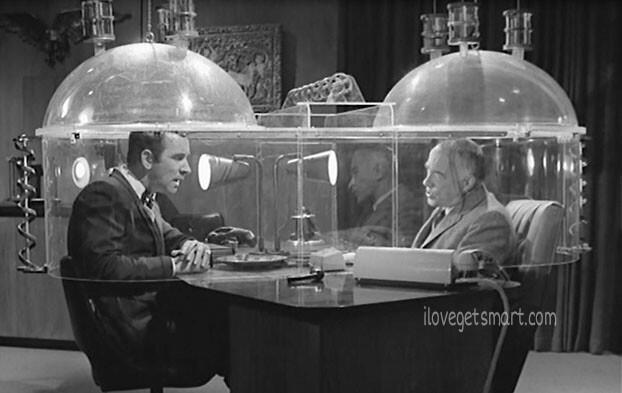After many weeks of lock down here in Australia and with our Covid 19 suppression strategy working, restrictions are lifting and workplaces opening. I’m so glad the pain of remote schooling has been worth it!
There is now a very clear message from the Government that for any business operating or wishing to operate in this climate, a “uniquely focused approach” to Work Health and Safety (WHS) and risk management is paramount.On the 24th April 2020, the National Cabinet agreed to develop nationally-consistent, industry-specific work health and safety guidance on COVID-19, under ten National Covid 19 Safe Work Principles. The Principles are clear, as are a number of detailed industry-specific Covid 19 management steps (find them here Safe Work Australia Covid 19 Resource Hub).
Given the WHS legal obligations of all businesses is to ensure so far as reasonably practicable that health and risks to workers and others (think customers, visitors, general public etc.) are controlled, the bar on the requirements for Covid 19 workplace management has been set. Businesses will need to interpret this guidance and apply it fairly promptly.
Like me, on the small number of trips outside your house you’ve likely seen some excellent virus-spread-reducing controls such as floor stickers, barriers, hand sanitiser stations and shopping-basket wiping. But you’ve also likely seen some not-so good or non-existent practices. To my local coffee shop and juice shop owners this last sunny Sunday, I’m looking at you.
As more organisations from real estate agents to physiotherapists, to schools, clubs, retailers and eventually offices reopen for business soon, lets simply the guidance into six (6) key steps for a safer workplace:
1. Develop a Plan
You must, in consultation with your workforce, assess your risk of Covid 19 spread both within your business and from outside your business (suppliers, deliveries, customers, visitors, contractors etc) and identify, understand and quantify your risks and associated control measures (i.e. elimination of contact rather than just wearing gloves and a mask).
This plan also needs to include response actions should a positive Covid 19 case occur, including reporting, communication, isolation, cleaning and re-opening processes. This will be super important given we’re about to have a lot more contact with people than we have in 6 weeks!
Consider who will be responsible for implementing this plan and how will it be communicated and monitored as time goes on and Government directives will likely continue to change?
2. Physical Distancing
Distancing people from one another as part of your business operations will be here to stay for sometime yet.
Understand your total operational area in square metres and identify not only your maximum capacity (often called the density quotient) including workers (1 person per 4 m2) but key bottlenecks or congregation areas at your workplace and ensure 1.5 m distance so far as is reasonably practicable. Consideration of the design of not only the workplace (i.e. traffic flows, queue points) but also job tasks needs to be considered (e.g. staggered shifts, rotating teams, home based work, physical barriers etc).
Workplace design, job planning, signage, barriers and screening amongst other controls will need constant review to determine if they are working effectively to maintain distancing.
3. Hygiene
We currently know that a combination of cleaning and disinfecting is the most effective for anti-viral cleaning. Critically identify your high touch areas and liaise with cleaners (or staff that will be cleaning) on products (detergent and household or commercial grade disinfectant) and around frequency of cleaning. Safe cleaning practices are important (i.e. appropriate use of gloves, replacement of cloths, one direction wipe, cleaning from the cleanest to dirtiest areas etc.). Make sure safety data sheets are available for products used.
Encouraging workers (and others) to regularly hand wash or use alcohol-based (60% ethanol or 70% isopropanol) hand sanitiser still needs to be front of mind in all workplaces, particularly as hand-wash-fatigue sets in!
Advise workers of safe respiratory hygiene (i.e. coughing into elbows, tissues into closed bins) particularly as we head into winter months and enable workers that feel sick to freely report this and stay away from the workplace. Temperature testing may even be a suitable control measure, but consider the logistics around implementing s and the privacy issues when doing so.
4. Managing Wellbeing
These are testing times for everyone and as time stretches on, some may feel comfort in the ‘new normal’ whilst others may be grieving the loss of the way things were and loss of income and stability. Consult and communicate with all workers (either at home or in the workplace) particularly around workplace readiness for Covid 19 and enable them to share. If your business does not currently have an employee assistance program (EAP) to support workers, there are a number of online services, many of which are free, including:
o Free Government Mental Health Skills Training
o Mental Health Resources
There really are so many fantastic mental health support services available showing that we really are #inthistogether.
We’re now needing to put more so much more time and effort into recreating social connections inside and outside of work that people are getting a little ‘Zoomed-out’. Employers should be aware of this and tailor and tweak connection methods accordingly, in consultation with their workers.

5. Safer Work at Home
As we now head into ‘week-I’ve-lost count’ of home-based work, the silver linings of being home more may be turning a little grey for some. The delineation between work and home may need tightening and a greater focus placed on routines and performance.
Continue to guide workers’ safe ergonomic and physical environmental set-up but also consider whether continued work at home for some is suitable psychologically.
Increased relationship and family stressors may be impacting on psychological health and the suitability for some workers to remain at home to work should be re-evaluated. Leaders will need to be aware of each workers’ individual and personal circumstances where they may not have had to previously.
6. Consult and Communicate
Systems to effectively consult with your workers are more important than ever but are more difficult to implement given current distancing. Workers need to be consulted about decisions that affect their health and welfare and this is not only best practice but a legal requirement. Things are moving quickly in this space but maintain worker feedback loops at every stage.
Remember also, worker’s perceptions of safety of the new work environment and their readiness to return will be different and employers must take this into account where practicable. Identifying vulnerable workers and those more suited to continued remote work will be necessary. Anticipate the likely questions, how will I commute? Will the kitchen and showers be open? What about the downstairs cafe? Will there be enough hand sanitiser to go around? These will all need answers before we step into the ‘new normal’.
Workers and others’ will have a keen focus on their perceptions of how safe and hygienic the workplace is. Communicate clearly, simply and frequently about all that you are doing, both internally and with relevant external parties by whatever mediums work for your company. Transparency leads to trust, accentuating the positive restores confidence and visualising the future provides hope.
Signage, signage, signage. Place reminders about distancing, hand washing and hygiene everywhere!

Good luck, wash your hands and you need any risk management advice or assistance, please email sue@sharedsafetyandrisk.com.au
Download our general Covid 19 Site Risk Management Inspection Final_COVID19_Checklist.
Visit the Safe Work Australia Covid 19 Hub here

